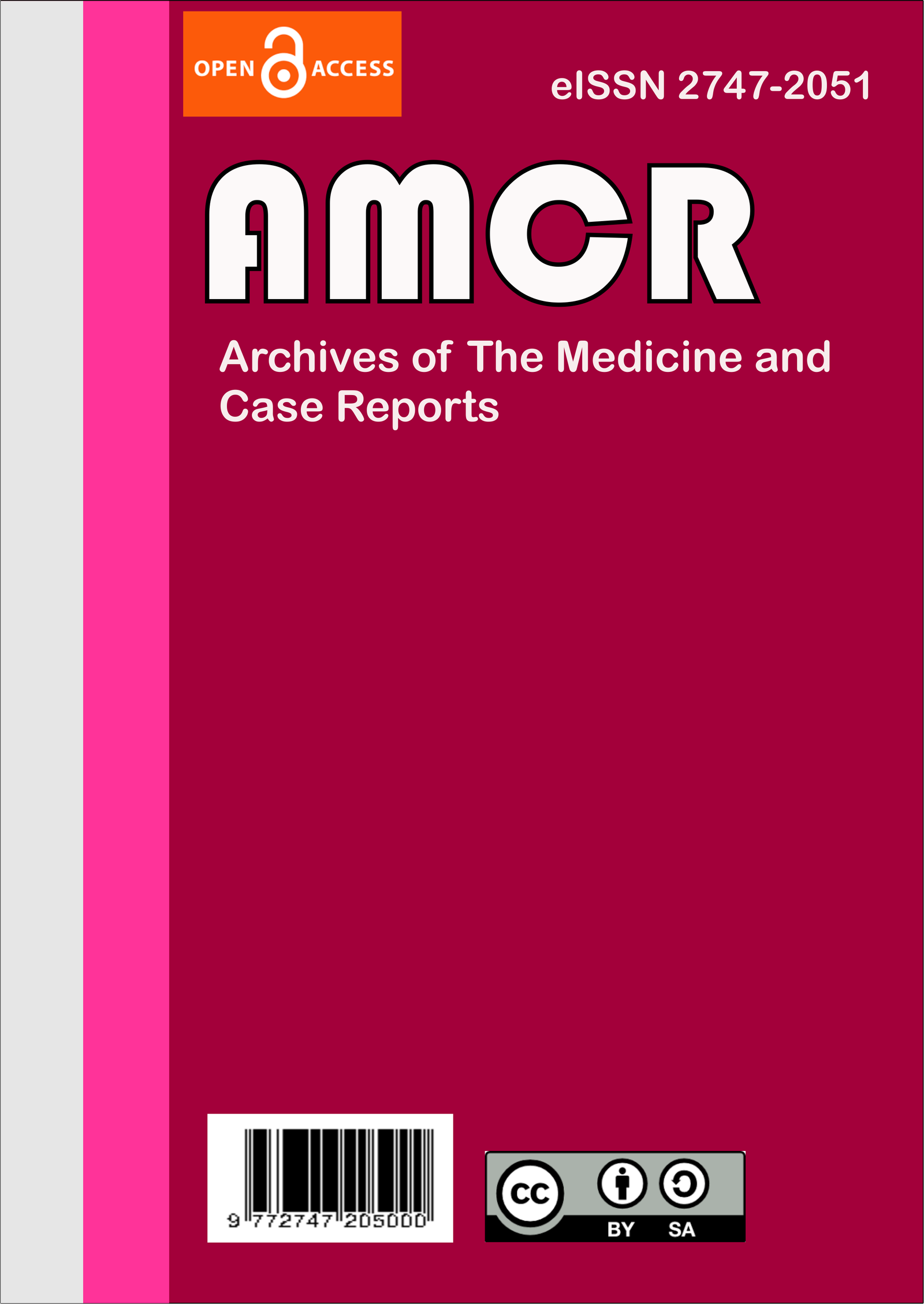Main Article Content
Abstract
Rhegmatogenous retinal detachment (RRD) represents a significant ophthalmic emergency, characterized by the separation of the neurosensory retina from the underlying retinal pigment epithelium (RPE) due to a full-thickness retinal break. High myopia is a major risk factor, particularly in younger individuals, owing to associated vitreoretinal changes and axial elongation. Surgical intervention is mandatory to prevent permanent vision loss. While pars plana vitrectomy (PPV) has gained popularity, conventional scleral buckling (SB) remains a highly effective and often preferred primary treatment, especially in young, phakic patients with peripheral breaks and uncomplicated detachments. This report details the successful management of an inferotemporal RRD using SB in a young female patient with high myopia. A 25-year-old female presented with a two-week history of progressively worsening blurred vision, preceded by floaters and photopsia in her left eye (OS). She had a history of high myopia (manifest refraction -7.50 D sphere OS) but no prior ocular surgery or trauma. Best-corrected visual acuity (BCVA) was counting fingers at 1 meter OS and 6/30 OD. Intraocular pressure (IOP) was 8.1 mmHg OS and 18.3 mmHg OD. Funduscopic examination OS revealed a bullous RRD involving the inferior and temporal quadrants, extending across approximately 6 clock hours, with the macula appearing clinically off. A single flap tear was identified in the inferotemporal quadrant at the 7 o'clock position, consistent with Lincoff's Rule 3. Optical Coherence Tomography (OCT) confirmed subretinal fluid involving the fovea. B-scan ultrasonography corroborated the presence of retinal detachment. The patient underwent conventional scleral buckling surgery with cryotherapy to the retinal break and subretinal fluid drainage under general anesthesia. Postoperatively, the retina achieved complete anatomical reattachment. BCVA OS improved slightly to counting fingers at 1 meter by day 12 post-operation, with expectations for further gradual improvement. In conclusion, conventional scleral buckling provided successful anatomical reattachment for an inferotemporal RRD secondary to a flap tear in this young, highly myopic patient. SB remains a crucial and effective surgical option for primary RRD, particularly in phakic eyes with peripheral breaks, offering excellent anatomical outcomes while avoiding the cataractogenic effects and potential intraocular manipulation risks associated with primary vitrectomy in this demographic. Careful case selection and meticulous surgical technique are paramount for success.
Keywords
Article Details
Archives of The Medicine and Case Reports (AMCR) allow the author(s) to hold the copyright without restrictions and allow the author(s) to retain publishing rights without restrictions, also the owner of the commercial rights to the article is the author.





